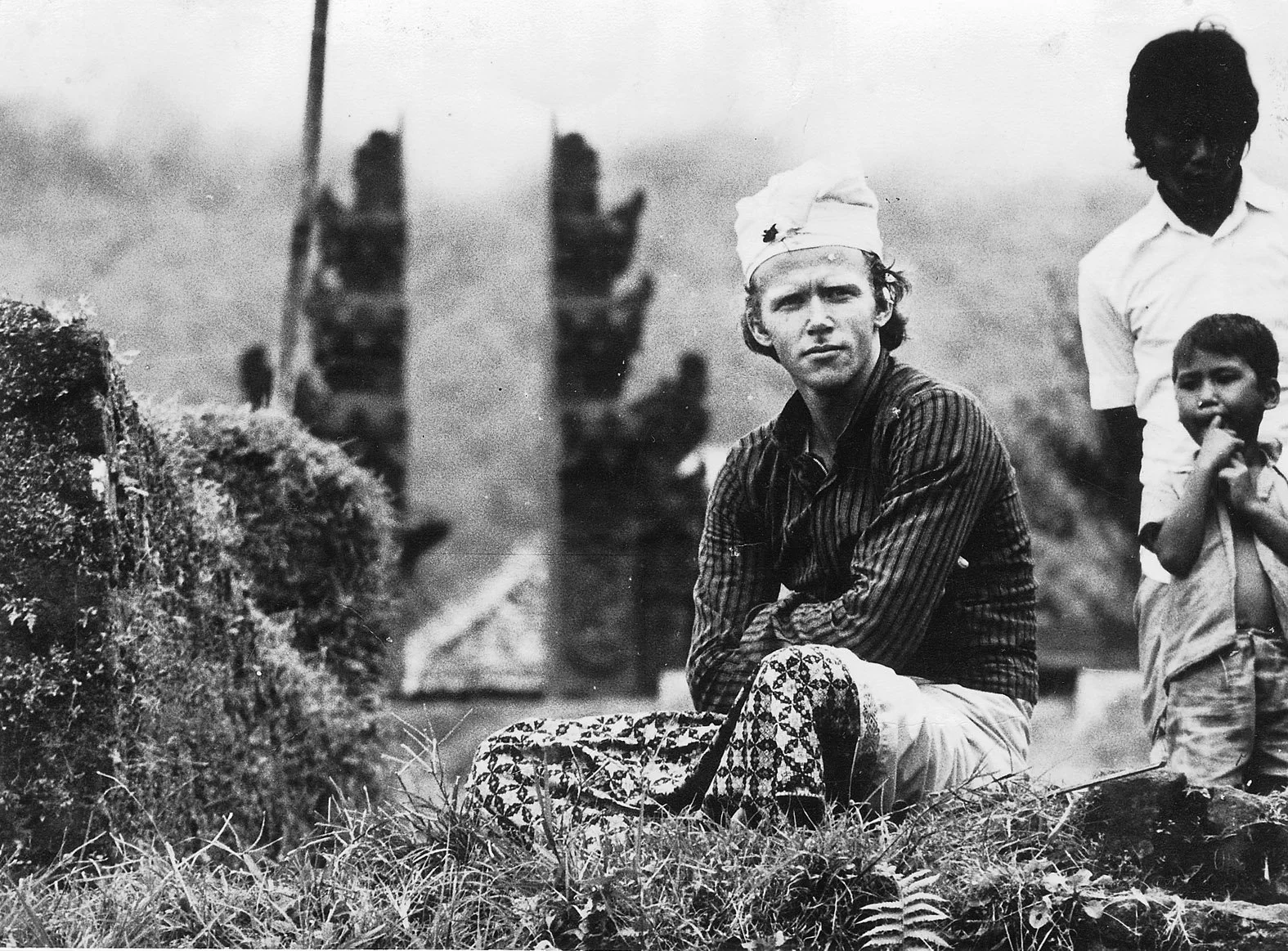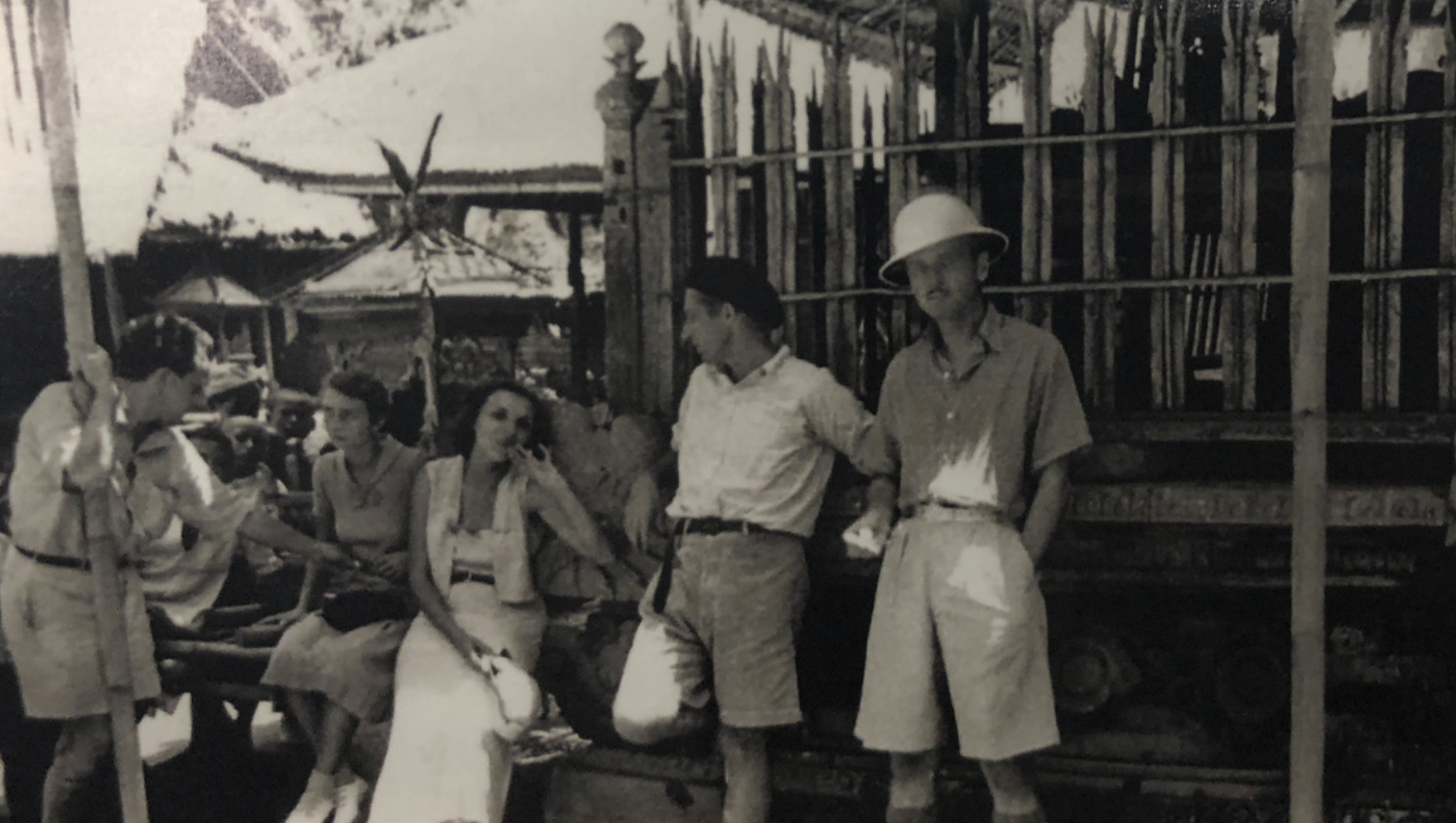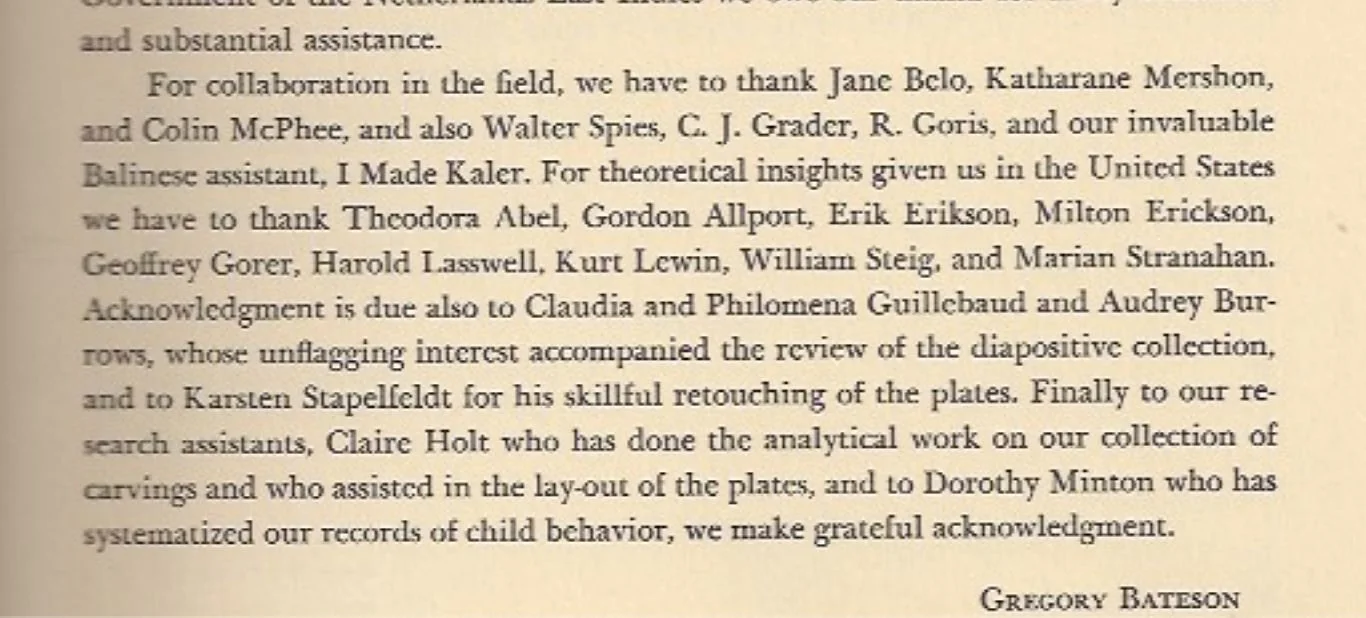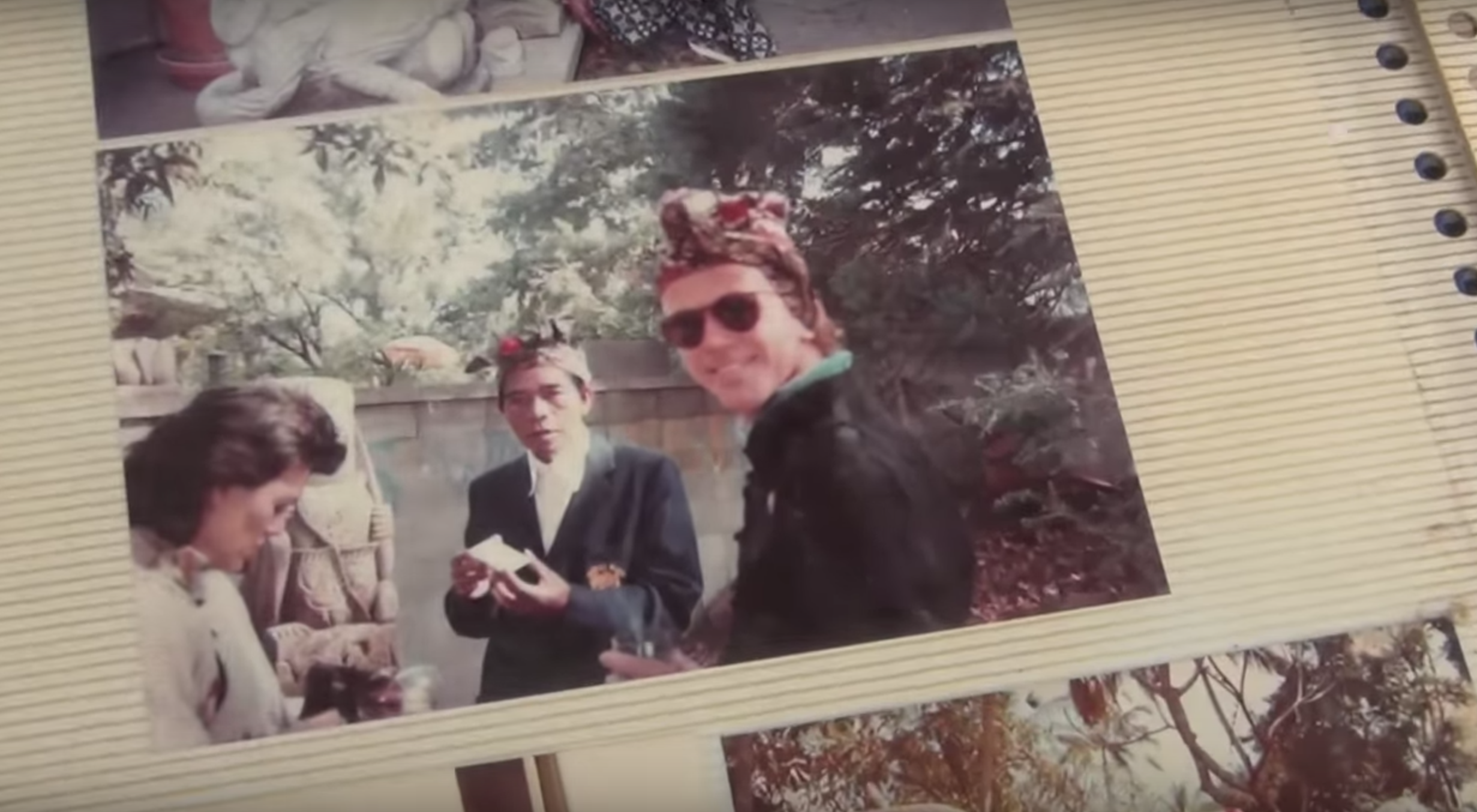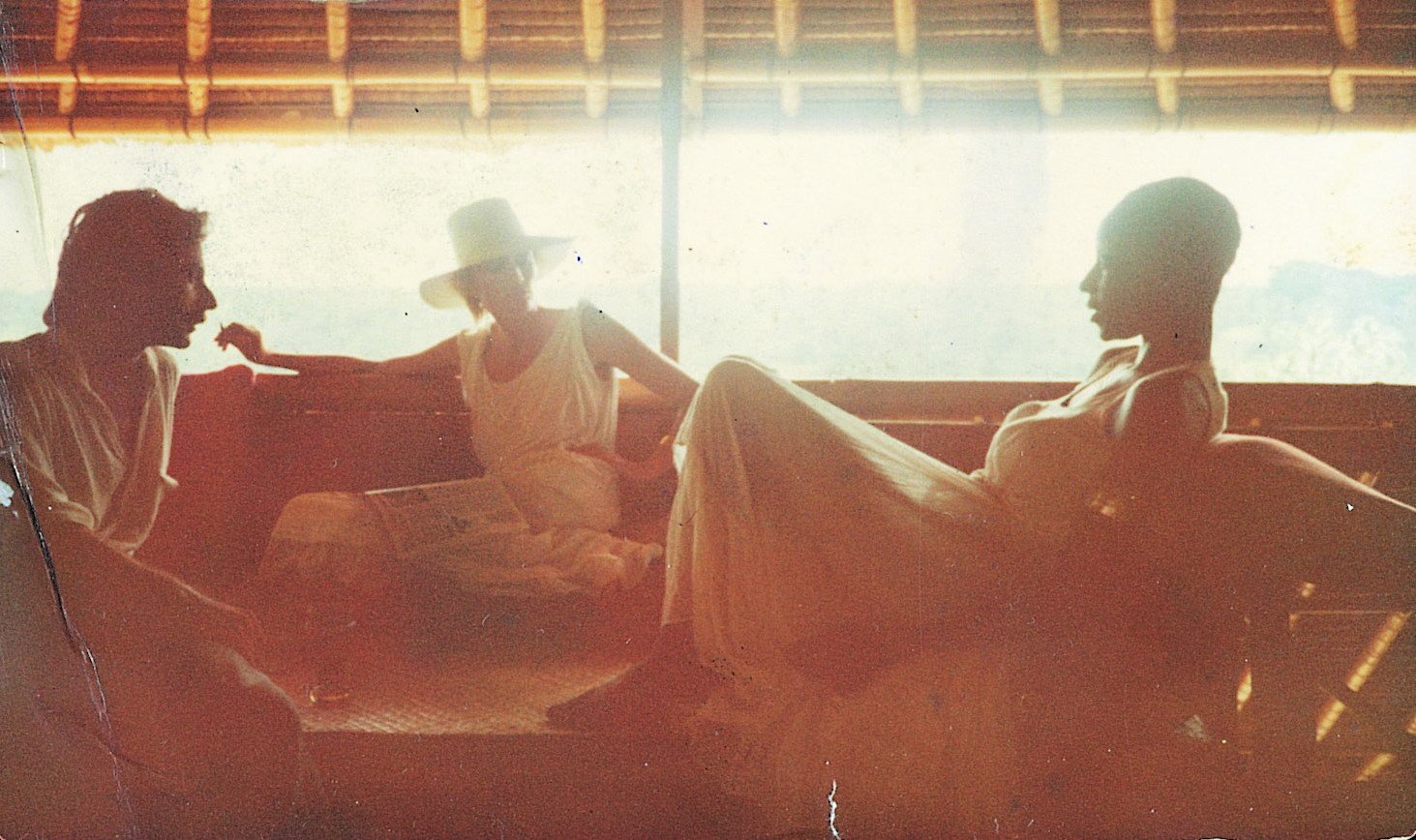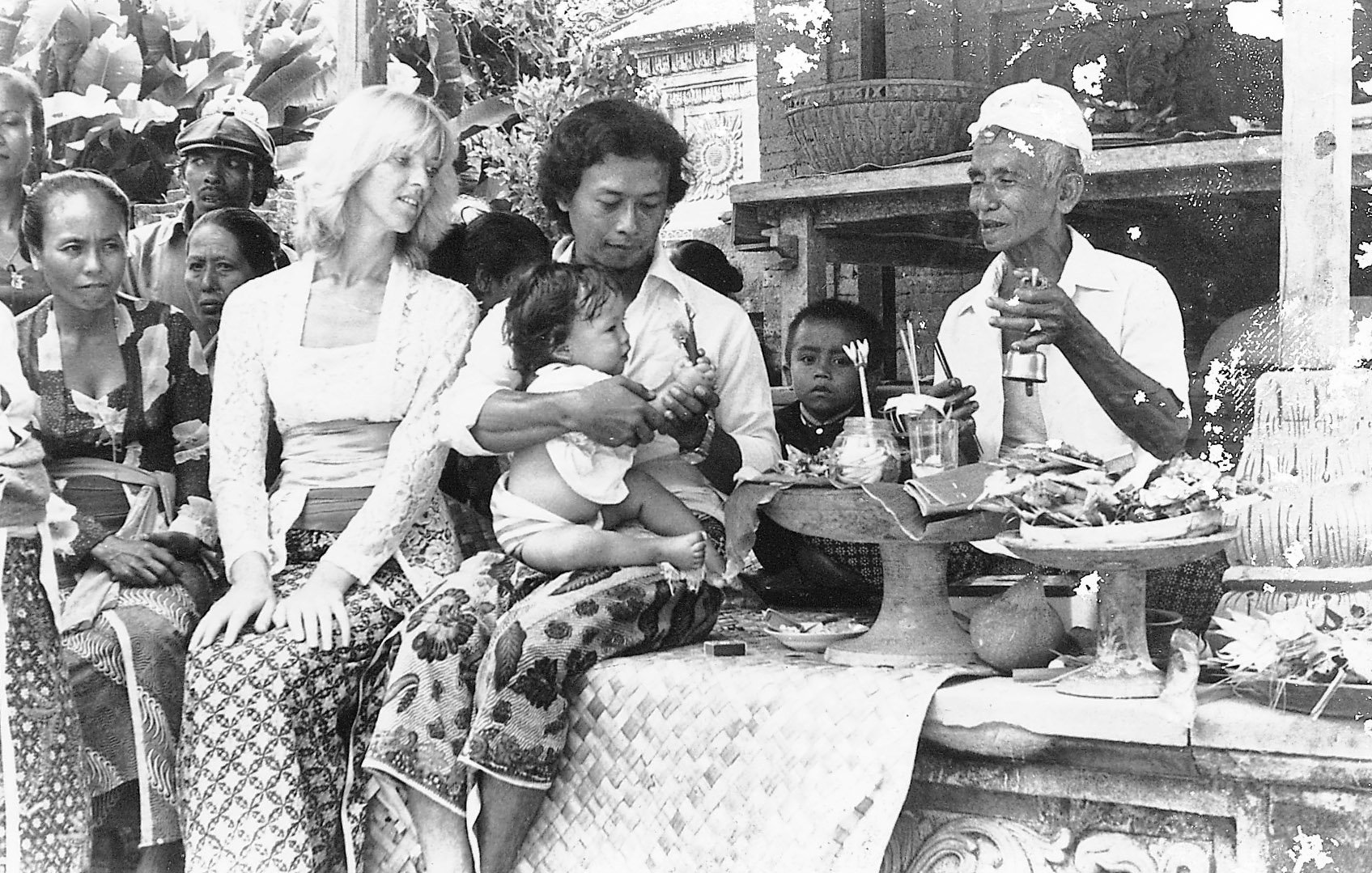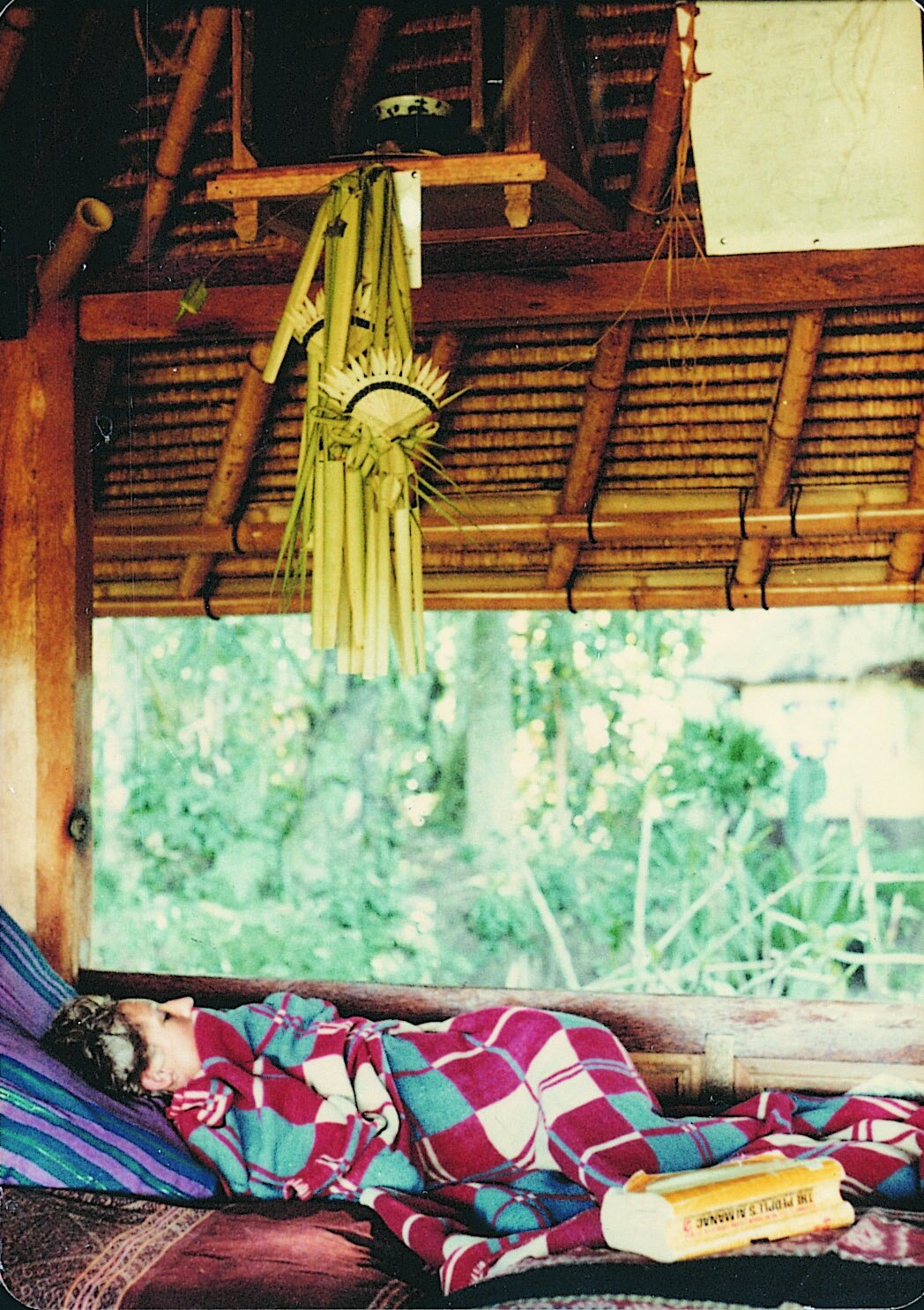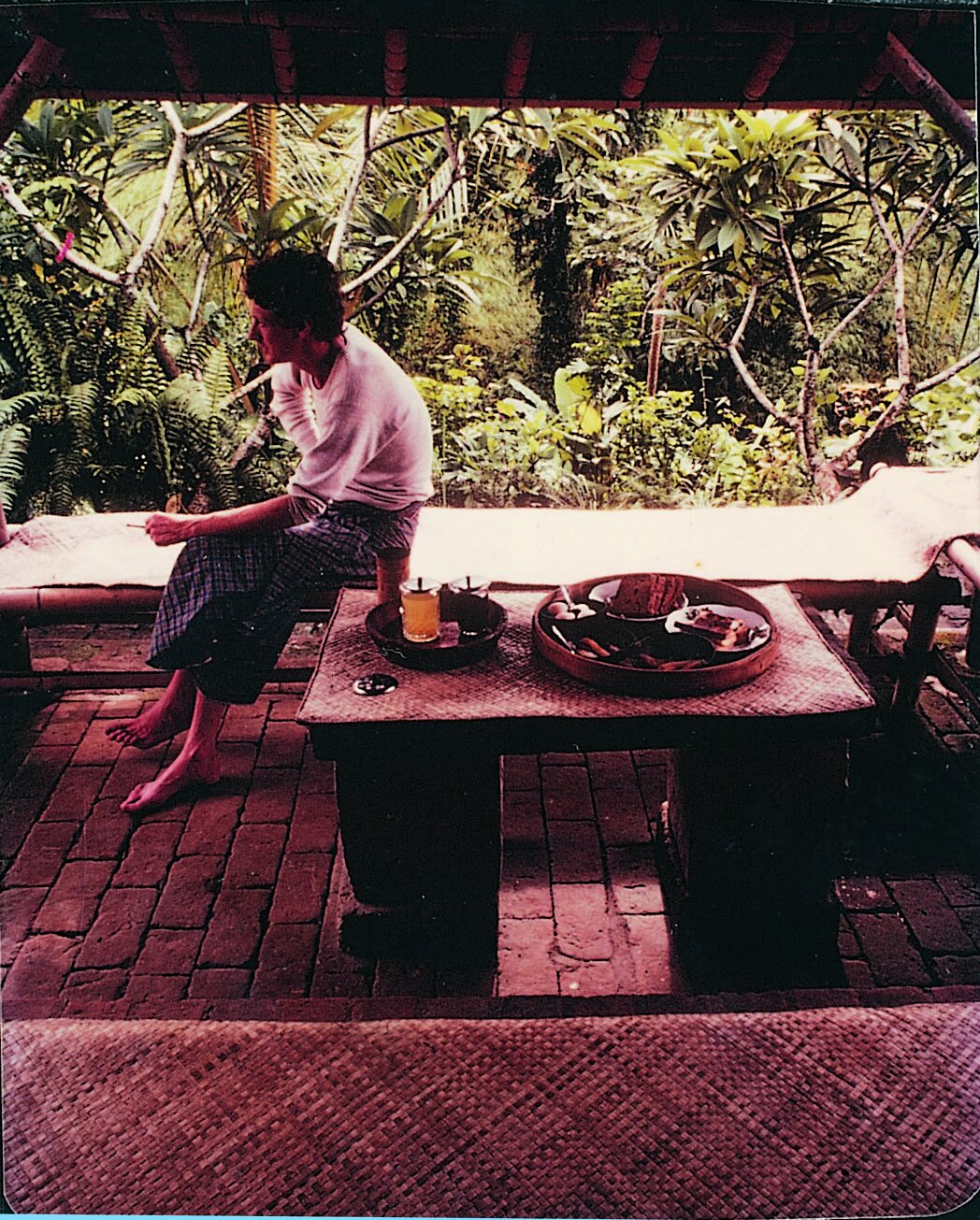This is the story of Taman Bebek, an iconic little property in Sayan Bali, that weaves together the last 90 years of cultural fascination for the Balinese way of life.
Colin McPhee’s House in Sayan, now Taman Bebek. Source: A House in Bali by Mcphee 1934.
How it was born, who was here & what it inspired.
The story of Taman Bebek dates back to the early 1930s, when the American ethno-musicologist, Colin McPhee and his anthropologist wife Jane Belo, together with the design advice of German artis Walter Spies, they built a Balinese house and beautiful garden on the edge of the ridge above the magnificent Ayung River valley. During the 1930s this was playground and source of inspirations to the adventurous and the intellectuals, home and venue to musicologists, anthropologists and novelists— such as Margaret Mead, Gregory Bateson, Pak Made Kaler, Barbara Hutton, Walter Spies, Claire Holt and Betty Waterson. From their house in Sayan, the McPhee-Belo couple actively entered local life. Collin McPhee was the first Westerner to study Balinese music with native teachers and he played different instruments in Balinese gamelan orchestras. Through his work he also helped revive the interest among the Balinese in older forms of the island's rich traditional music.
Long-term residents: Margaret Mead, Gregory Bateson, Barbara Hutton, Walter Spies and Betty Waterson.
Jane Belo anthropological fieldwork sparked the interest of Margaret Mead and Gregory Bateson, leading them to Bali for extended periods of time to carry research on the areas of psychology and social anthropolgy.
Makluk and Master painter Ida Bagus Made at the gardens of McPhee Bello Property, now Taman Bebek. Photo by Claire Holt, circa 1935
Academics and Musicians such as Mc Phee, Jane Belo, Gregory Bateson and Margaret Mead could not have achieved success without their local mentors, friends and assistants’ insider knowledge and extensive labor.
I Made Kaler (center), Margaret Mead’s Balinese collaborator, interviewed people and wrote more than 500 texts to supplement Mead’s (right) research.
“I Madé Kalér worked as a secretary for Margaret Mead, a superstar anthropologist who was Boas’ student. Madé Kalér was born in the 1910s to a lower-caste family from the mountains of North Bali. Well-educated in Malay and Dutch schools, he grew up speaking five languages, including English, Dutch, and Balinese.
After graduating from high school, he traveled to Batavia (now Jakarta), the capital of the Dutch East Indies (now Indonesia). He was hoping to find a well-paying government job. Instead, he met Mead and her husband, Gregory Bateson, who were looking for a research assistant for their fieldwork in Bali—studying character formation and how it related to schizophrenic behaviors. That eventful encounter in 1936 was the beginning of their collaboration.
Madé Kalér might only be mentioned briefly in Mead’s work, but he wrote more than 500 Balinese texts to supplement Mead’s notes. He covered a plethora of Balinese customs, such as a baby’s 3-month birthday and a village’s purification ritual. Madé Kalér’s fluency in Balinese made him sensitive to the unseen and spontaneous. His observations captured the sadness in a lower-caste family’s funeral ceremony, children’s dreamy banter about their future professions, and ceremonial details. These insights often escaped Mead’s attention due to the language barrier.” Source
In 1935, Collin McPhee met one of his more important teachers, Maestro Wayan Lotring, a brilliant Balinese composer who helped McPhee reorganize a gamelan club in the coastal village of Kuta (McPhee 1946 : 164-165). With Lotring, who made a series of recordings for Odeon in 1928 (McPhee 1966 : 152), he tried to study in depth one type of ensemble in Bali called gamelan pelegongan, particularly in Kuta. McPhee also learned many other things about Lotring’s life as a composer as well as studied his music for gamelan pelegongan that was quite unlike anything that McPhee had heard in the island. At the end of December 1935, Colin McPhee went back to America (Oja 1984 : 7). He brought with him idea of new music that was influenced by the music of Bali, which he had by then studied and engaged in for four years. He was spending some of his time in Mexico, where he came up with an idea to compose a piece for orchestra using ideas of Balinese music in combination with western music and other styles as well. The result of this was a composition called Tabuh-Tabuhan (Toccata for Orchestra and Two Pianos), composed in 1936 and first performed by Carlos Chave and the National Orchestra of Mexico City.
Then a whole nouvelle-vague of iconoclasts were drawn to Taman Bebek for the decades to come.
David Bowie with Taman Bebek staff.
In the 1970s, when Bali lover, landscape artist and writer Made Wijaya acquired the land, the foundations of these houses remained intact but needed some care – the view, however, was still magnificent and unspoiled.
A number of cottages, approximating the scale and layout of the original pavilions, were carefully reconstructed and Taman Bebek was born. During the following decades, Wijaya continued with McPhee's tradition of searching for higher aesthetics while hosting flamboyant guests.
Among the geckos and frogs, Yoko Ono, David Bowie, Mick Jagger, Francis Ford Coppola, and many other remarkable guests have taken a rest in the bungalows and gardens of this unique historical and inspiring property.
Wijaya designed at least 600 public and private gardens around the world, in places from the US, Mexico and Belize, to Spain, Morocco, Southeast Asia and Australia. As a recognised authority on tropical gardens and architecture, he also authored seminal books on Balinese vernacular architecture
About Made Wijaya
Disliked by some, loved by many, missed by all. Made Wijaya was born Michael White in Sydney, Australia. He arrived in Bali in 1973, ‘having jumped ship and swum ashore in a rainstorm’ or so the myth goes. A student of architecture, he first of all intended the visit as a short break from his studies, but his fascination with Bali’s rich culture and tradition led him to move in with a Brahman family in South Bali. After various jobs teaching tennis and English, working as a tourist guide and photojournalist, he began contributing to guide books before being asked to design the gardens of the legendary Bali Oberoi.
More than 600 gardens later, Wijaya became a world-renowned tropical garden designer whose company, P.T. Wijaya Tribwana International, reached a 500–strong team of artisans and “garden commandos,” as he called them. He traveled between his Bali base and Singapore, India, Spain, Morocco, Hawaii, Australia and Mexico to weave his magic. He was also famous for landscaping David Bowie’s holiday home in Mustique, an island in the Caribbean, along with Linda Garland.
A recognized authority on tropical gardens and South East Asian architecture, he published five books, The Complete Stranger in Paradise; Balinese Architecture: Towards an Encyclopaedia; Tropical Garden Design (Archipelago Press and Wijaya Words, 1999); At Home in Bali (Abbeville Press, 2000); and Architecture of Bali – A Source Book of Traditional and Modern Forms (Archipelago Press and Wijaya Words, 2002). He also contributed to Tropical Asian Style and was the main author of a pocket guidebook to Bali.
Made Wijaya wrote in every issue of NOW! Bali Magazine since 2009, his column ‘Stranger in Paradise’ provided unique insight and opinion into Balinese culture, Balinese society and can truly never be replaced – he also wrote monthly for NOW! Jakarta Magazine.
Made’s legacy will live on through his many recordings through photos, words and video. You can find his monthly columns over the years in the Now! Bali Culture section dedicated to him: Stranger in Paradise Archive and watch many of his YouTube videos on his channel found here: Made Wijaya Youtube Channel
Names in the Taman Bebek Story
-
Wayan Lotring, one of the greatest Balinese musicians of the first half of the 20th century, finally a part of the musical mythology in a country where the soul of an artist is nature's most coveted gift, and the most sacred that the gods can grant.
-
Best known for being the first Western composer to make a musicological study of Bali, and developing American gamelan along with fellow composer Lou Harrison.
-
I Nyoman Kaler, a name that has almost become a myth. A Master of Dance and Percussion who gave birth to many creations, which then catapulted Bali's name throughout the world. Together with two of his colleagues, I Wayan Lontring and I Ketut Marya, Kaler became a legendary Balinese artist.
I Nyoman Kaler was born in 1892 in Pemogan Village, South Denpasar District. His father, I Gede Bakta, was a versatile artist in his time. Ni Ketut Taro's mother also had artistic blood. His grandfather was I Gede Salin, and his father himself was a dance and drum teacher who had a name. Kaler himself studied with his grandfather and father, who later passed on to him the dances of Nandhir, Baris, Butterfly, Sisia Calon Arang, Wayang Wong, and Parwa.
-
In short, Spies influenced the direction of Balinese art and drama. Often credited with attracting the attention of Western cultural figures to Balinese culture and art in the 1930s. He design McPhee’s house where they hosted numerous anthropologists, actors, artists, and other cultural figures.
-
Traveler, artist, photographer and fieldworker, was noted as pioneer in anthropological photography. Author of 'Trance in Bali'
-
The anthropologists Margaret Mead and Gregory Bateson visited Bali for two years of research in the 1930s, shooting some 22,000 feet of 16-millimetre film and 25,000 photographs, and completing seven films, of which Trance and Dance in Bali is one. They were married in 1936.
-
Mead and Bateson employed I Madé Kalér in this capacity. Madé Kalér, who spoke five languages, took notes on events, interviewed people, and collected other necessary information. He produced more than 500 Balinese language texts to supplement Mead's notes.
-
Australian born world-renowned tropical garden designer, father of Taman Bebek, he was one of the islands most flamboyant, controversial and larger-than-life characters, an artist, designer, photographer, videographer, landscape designer and gardener, historian, journalist, humourist, satirist, diarist, anthropologist and more.
-
Having stayed during his honeymoon at Taman Bebek made Ziggy Stardust a Bali lover for eternity. Comissioned Made Wijaya to design his gardens in Mustique island in the Caribean. Bowie was hosted by Made Wijaya when in Bali and inspired by the history of the Taman Bebek property.
-
Jagger is said to have gone unrecognized while at Taman Bebek. At Taman Bebek you can’t always get what you want, but if you try real hard, you get what you need.
-
Inspired by Taman Bebek, Filmmaker Francis Ford Coppola commissioned Made Wijaya to design and build his Balinese-style resort in Belize.
Not to forget other important figures of the story of the property such as BPak Nyoman Miyoga, Carole & Peter Muller, Yani, Pak Pandi, Ian Van Wieringen, John Darling, Agnes, Yoko Ono, and many others,

Getting in the mood
Before arrival or during your stay you might want to dive deeper into the Bali experience, here are some recommendations, these are all informative, entertaining, and beautifully written books, written about Bali by foreigners, many of whom are long-term residents on the island. This list was put together by the late Made Wijaya:
-
A House In Bali by Collin McPhee
Written during the 1930s from what is now the Royal Villa at Taman Bebek, A House in Bali remains one of the most remarkable books ever written about the fabled island of Bali. This classic book tells the story of Balinese culture through a history of Balinese music.
Island of Bali by Miguel Covarrubias
First published in 1937, "Island of Bali" has come to be regarded as a classic work on the Balinese people and their civilization. Written with remarkable clarity, Covarrubias describes the geography and nature of the island, along with the history of the people, providing a thorough account of the community, family, and individual in all spheres of Balinese life.
-
Bali: Sekala & Niskala by Fred B. Eiseman, Jr
Secrets of Bali, Fresh Light on the Morning of the World by Jonathan Copeland & Ni Wayan Murni
Bali: A Paradise Created by Adrian Vickers
-
Architecture of Bali by Made Wijaya (for sale at reception)
Bali Style by Barbara Walker & Rio Helmi
-
Murni’s Very Personal Guide to Ubud by Ni Wayan Murni (writer) & Jonathan Copeland (photographer)
Indonesia Etc. Exploring the Improbable Nation by Elizabeth Pisani
-
Dragons in the Bath, also published under the title Bali Daze by Cat Wheeler
Bali Moon by Odyle Knight
Eat Pray Love by Elizabeth Gilbert
-
The Painted Alphabet by Diana Darling
Andrew & Joey: A Tale of Bali by Jamie James
Bones of the Dark Moon by Richard E Lewis
-
Unsurprisingly, Balinese culture has been the subject of many documentaries and it’s hard to know which ones to go for. Some recent films of interest include:
Bali Is My Life
Bali: Island of the Dogs
The Ring of Fire, by the Blair brothers





